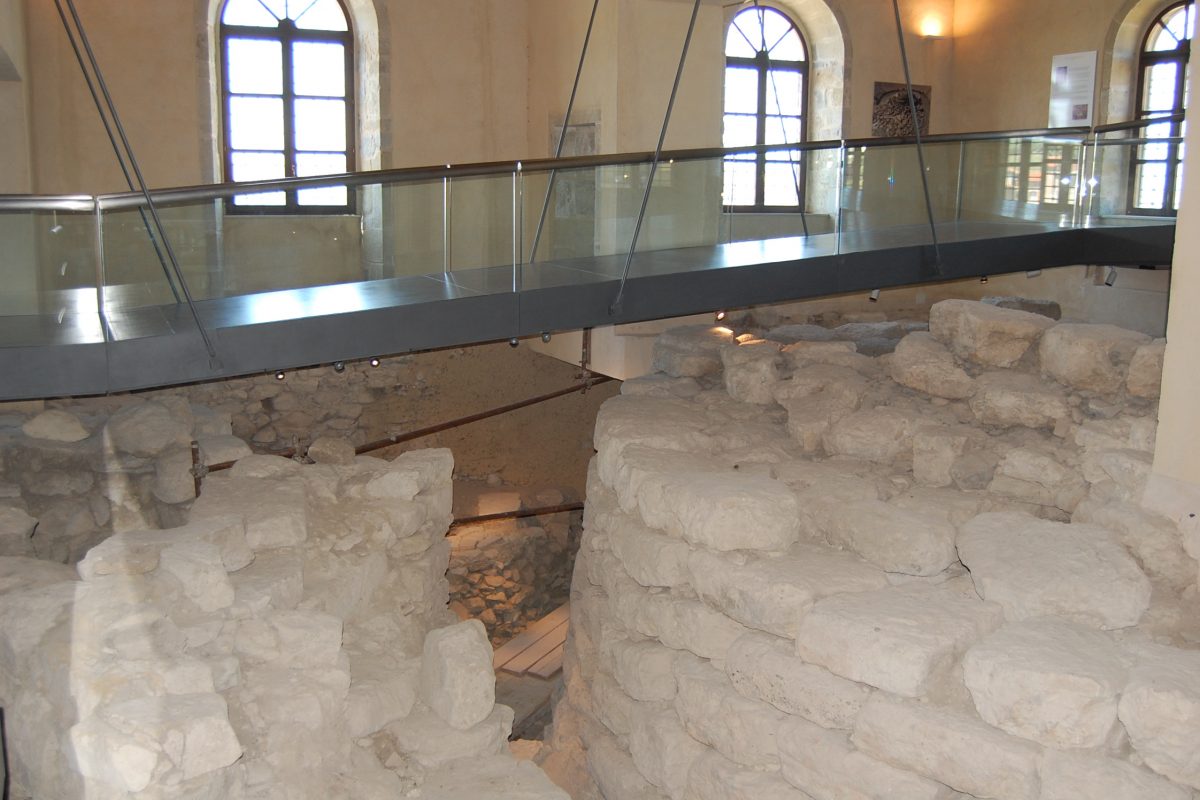It is well known that Sardinia’s beaches are among the most beautiful in Italy, if not the world. What is perhaps less well known is the history, traditions and culture that have always accompanied this island and whose influences can still be seen today. So, if you’re planning a holiday and would like to know more, here are some of the most beautiful museums in Sardinia that you can visit all year round. Shall we start?
ARCHAEOLOGY & HISTORY
Archaeological Museum of Cagliari
The city of the towering walls, with its imposing Elephant Tower, offers a variety of interesting sights and museums. We recommend a visit to the Archaeological Museum in Cagliari‘s historic Castello district, which shares the terraced Cittadella dei Musei with other exhibition spaces (Siamese art, art gallery and waxworks). Inside the museum you can discover the 7,000-year history of the island: from prehistory to the Punic and Roman periods and the early Middle Ages.
Among the most important pieces are the famous Sardinian bronze statues, including those of tribal chiefs, and the decorated and polished ceramics of Ozieri. Since 2014, the museum has also housed some of the impressive giant sculptures from Mont’e Prama (more of these statues can be seen in the museum in Cabras).
Tip: From the upper terraces of the complex, you have a wonderful view over the city.
Cagliari Archaeological Museum / Cittadella dei Musei
Piazza Arsenale 1, 09124 Cagliari (CA)
Opening hours: Wednesday to Monday 8:30 – 19:30, Tuesday closed
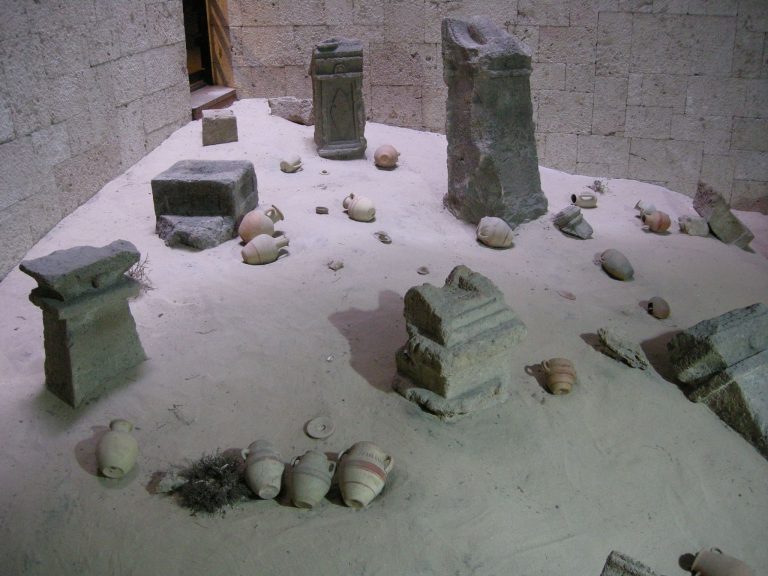
Giovanni Marongiu Civic Museum of Cabras
From prehistory to the Middle Ages, this small but fine museum shows you the rich history of Sardinia through the archaeological finds around Cabras and the Sinis peninsula with its ancient city of Tharros. Among the artefacts on display are those from the Cuccuru is Arrius settlement (on the shores of the lagoon near Cabras), the remains of an ancient Roman shipwreck from the 1st century BC and the imposing giant statues of Mont’e Prama. These latter treasures were excavated in the 1970s a few kilometres from Cabras. Today, six male statues found during the excavations are on display in the museum. Other statues can be seen in the aforementioned Archaeological Museum in Cagliari.
Giovanni Marongiu Civic Museum
Via Tharros, 09072 Cabras OR
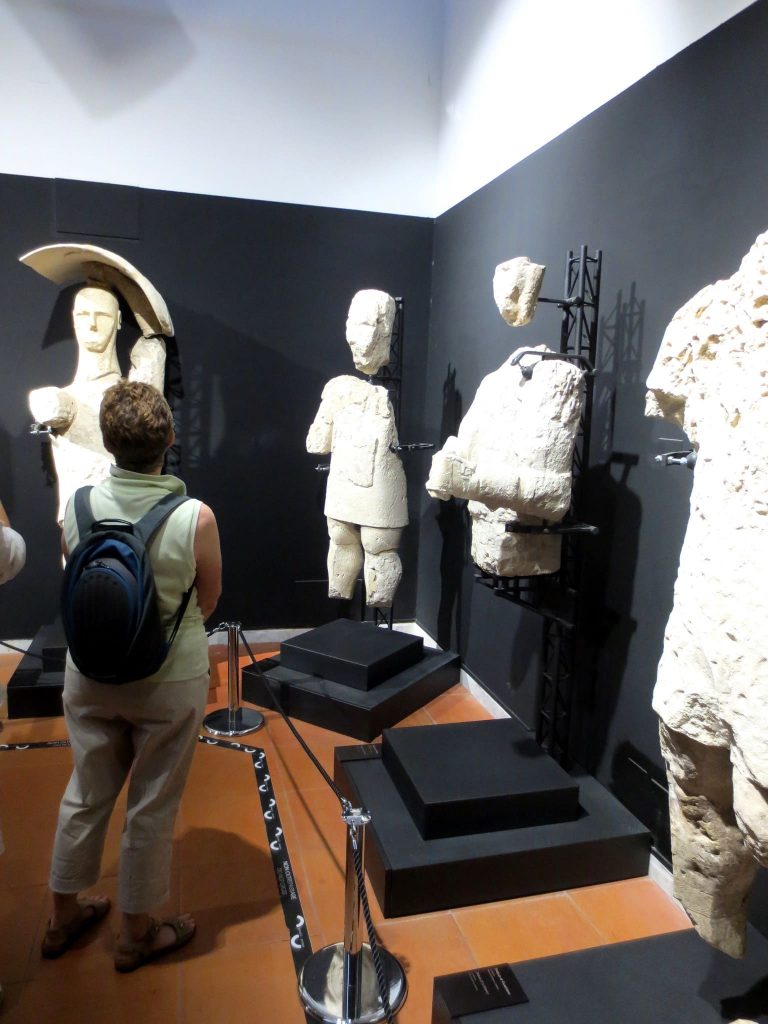
Archaeological Museum of Dorgali
How can you see 3,000 years of history in a single day? By visiting the Archaeological Museum in Dorgali. The exhibition is divided into three chronological rooms, where you can see artefacts from the Neolithic period to the Middle Ages: these come from the excavations of the Domus de Janas of Marras, the Monks’ Grotto, the nuragic village of Serra Orrios, the tomb of the giants S’Ena e Thomes, the Arvu Nuraghe, the cave of Ispinigoli and the settlement of Tiscali, among others. You can also take part in workshops and themed events designed for children.
Tip: when visiting the museum, do not forget to stop at the nearby nuragic village of Serra Orrios: the remains of this ancient settlement give a good idea of Sardinia’s prehistory in a very evocative setting.
Dorgali Archaeological Museum
Via Lamarmora s.n.c | 08022 Dorgali (NU)
Antiquarium Arborense in Oristano
Oristano, on the west coast, is full of history and beautiful places to visit. Among them is the Antiquarium Arborense, an archaeological museum with no less than 10,000 archaeological finds not to be missed, including some from the city of Tharros.
Tip: From here, it’s not far to the Sinis peninsula, where you can see the ancient city of Tharros, right by the sea.
Antiquarium Arborense
Piazza Corrias, 09170 Oristano
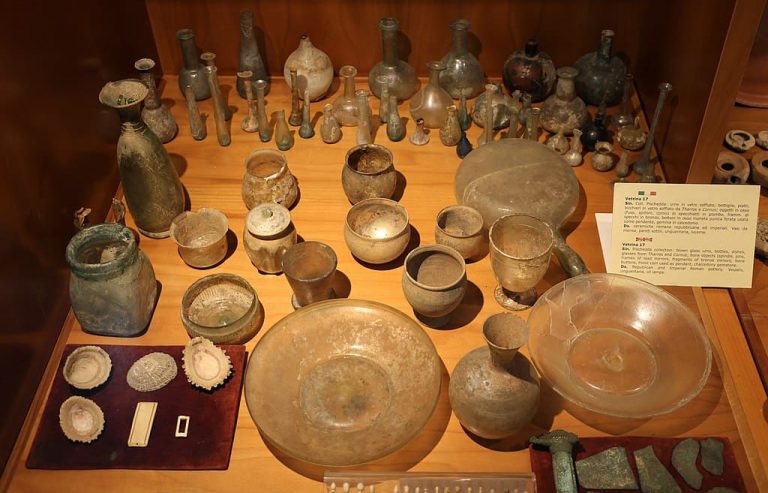
Casa Zappata near Barumini
Near Barumini is the unique Nuraghe Su Nuraxi, a UNESCO World Heritage Site and one of Sardinia’s must-sees. Nearby is Casa Zapata, a stately villa that is now a museum. During construction work in 1990, it was accidentally discovered that the villa had been built over a nuraghe. Today, visitors can admire the particular history of Barumini and its nuragic culture layer by layer, walking along paths and glazed floors. The museum also tells the story of the Spanish domination of Sardinia through the example of the Aragonese noble family of Zapata.
Casa Zapata
Piazza Papa Giovanni XXIII, 09021 Barumini SU
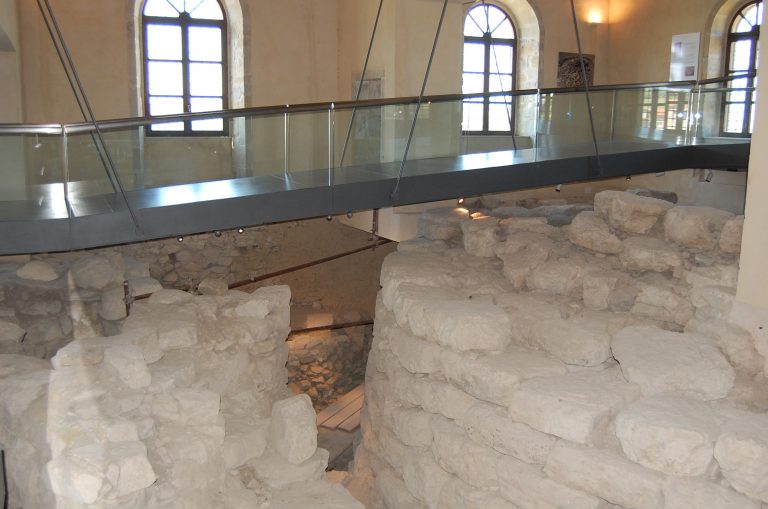
Nuoro Ethnographic Museum
In Nuoro we recommend a visit to the Sardinian Ethnographic Museum, the Museo del Costume. The most beautiful artefacts from the past reveal an often forgotten reality, because history is not only found between the pages of a book or on the walls of the city’s monuments, it is also always present in traditional costumes, crafts and handicrafts. The Museum of Sardinian Popular Traditions also has an auditorium that can be used for concerts, temporary exhibitions and other cultural events.
Costume Museum
Via Antonio Mereu, 56, 08100 Nuoro NU,
Open from Tuesday to Sunday, closed on Mondays.
ART
MAN, Nuoro Museum of Modern Art
When in Nuoro, do not miss the Museum of Modern Art, because this city is not only about the past, but also about the present. The MAN constantly hosts modern art exhibitions of national and international importance. Inaugurated in 1999, the museum is housed in a historic 19th-century building and covers an area of 600 square metres. The first and second floors contain paintings and prints by numerous Sardinian artists, such as Mario Manca, while the ground floor hosts temporary exhibitions. Innovative activities are organised not only at MAN, but also in the surrounding area, such as travelling exhibitions to encourage creativity and experimentation.
MAN Museum
Via Satta 1
Open from Tuesday to Sunday from 10.00 to 13.00 and from 16.30 to 20.30.
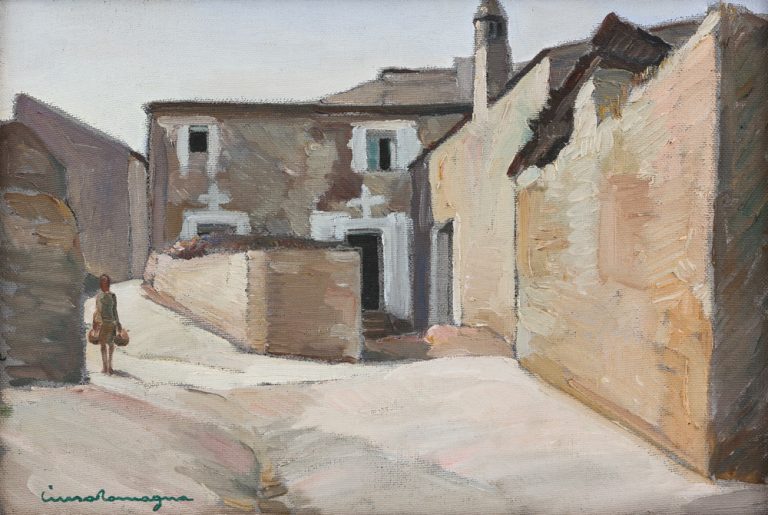
Copyright MAN Nuoro; Toni grigi – Giovanni Ciusa Romagna – 1938
Pinuccio Sciola Museum in San Sperate
In San Sperate you can visit a museum dedicated to the sculptor Pinuccio Sciola. Sciola was responsible for the murals that decorate many of the buildings in his native town. Sciola is also known for his Pietre Sonore (sound stones). In the Giardino Sonoro (Garden of Sound Stones), an fascinating open-air museum, these can be set in motion mechanically by striking or rubbing them, creating fascinating sounds. A truly unique experience for young and old.
Pinuccio Sciola Museum
Via E. Marongiu, 21, 09026 San Sperate CA

Nivola Museum in Orani
In the heart of Sardinia, in the village of Orani, there is a museum that houses numerous works by Costantino Nivola, one of the greatest Sardinian artists of the 20th century. Nivola focused on the “synthesis of the arts”, in particular the integration of visual arts and architecture. The Museo Nivola houses a permanent collection of over 200 sculptures, paintings and drawings and organises temporary exhibitions focusing on the relationship between art, architecture and landscape.
Museo Nivola
Via Gonare, 2, 08026 Orani NU
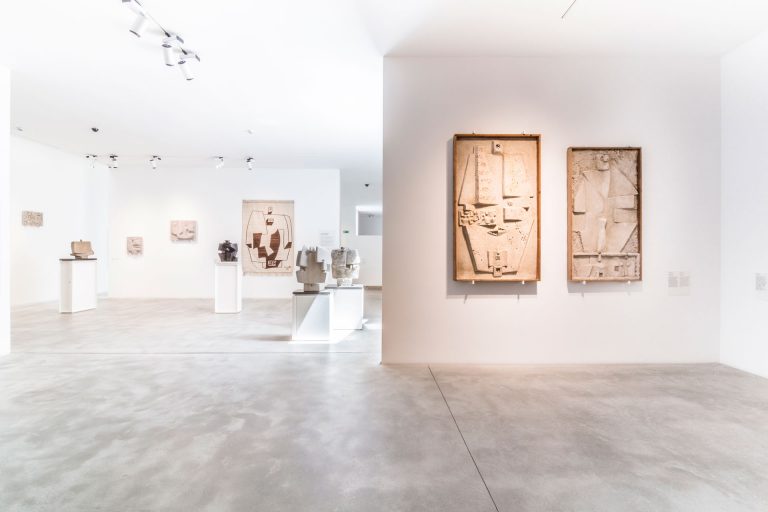
Copyright: https://www.museonivola.it/
Civic Museum of Sinnai
The MUA, Museo e Archivio di Sinnai, is located in the town of Sinnai, not far from Cagliari, and exhibits the works of 20th century Sardinian artists in a variety of techniques and media: painting, drawing and engraving.
The museum also offers a “space” for everyone, with the idea of experiencing and sharing art. This cultural centre is also known for its important historical archive.
MUA Museum and Archive
Via Colletta 20, Sinnai
National Art Gallery of Sassari
Opened in 2001, this museum is located in the historic centre of Sassari. The building dates back to the Jesuits who arrived in Sassari in 1559 and brought about important cultural changes in the city. Today the Pinacoteca, which has been completely restored, houses works from the Middle Ages to contemporary art. The Pinacoteca has the largest collection of paintings on the island!
National Art Gallery of Sassari
Piazza Santa Caterina, 4, 07100 Sassari SS
Tip: there are many archeological sites around Sassari.
MURATS Textile Museum of Samugheo
The MURATS Museum of Sardinian Textile Art (Museo Unico Regionale Arte Tessile Sarda) awaits you in the centre of Sardinia, in the village of Samugheo. This place tells a centuries-old story, that of the island’s historical textile memory. Among the most important works are the affacciadas: small, finely woven strips of fabric that were displayed during the Corpus Christi procession. The permanent temporary exhibitions, which tell the story of Sardinian textile art from many different and unusual angles, are also very interesting.
MURATS Museum
Via Bologna, 09086 Samugheo OR
Opening hours: Tuesday to Sunday, Monday closed

Museum of Mediterranean Masks at Mamoiada
Carnival in Sardinia is different, and the different masks play an important role. Mamoiada, a village in the wild Barbagia, in the heart of the island, famous for its mystical carnival of the Mamuthones and Issohadores, is home to this little known but exciting and traditional mask museum. Three rooms full of history (and masks) await you amidst costumes, images and music.
Museum of Mediterranean Masks
Piazza Europa, 15 08024 – Mamoiada, Nuoro
Every day except Tuesday, from 10 to 18 pm
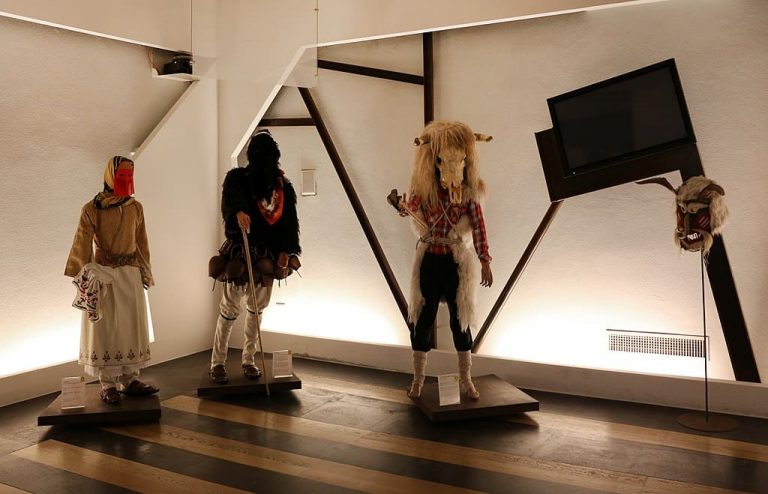
Grazia Deledda Museum in Nuoro
Winner of the Nobel Prize for Literature in 1926, Grazia Deledda is an important part of the island’s history, and not only thanks to her books. In honour of the writer, her birthplace in Nuoro, where she lived until her marriage, has been transformed into a museum full of manuscripts, pictures and much more. A place where you can learn more about the first winner of the Nobel Prize for Literature and her beloved Barbagia.
Grazia Deledda Museum
Via Grazia Deledda, 42, 08100 Nuoro NU
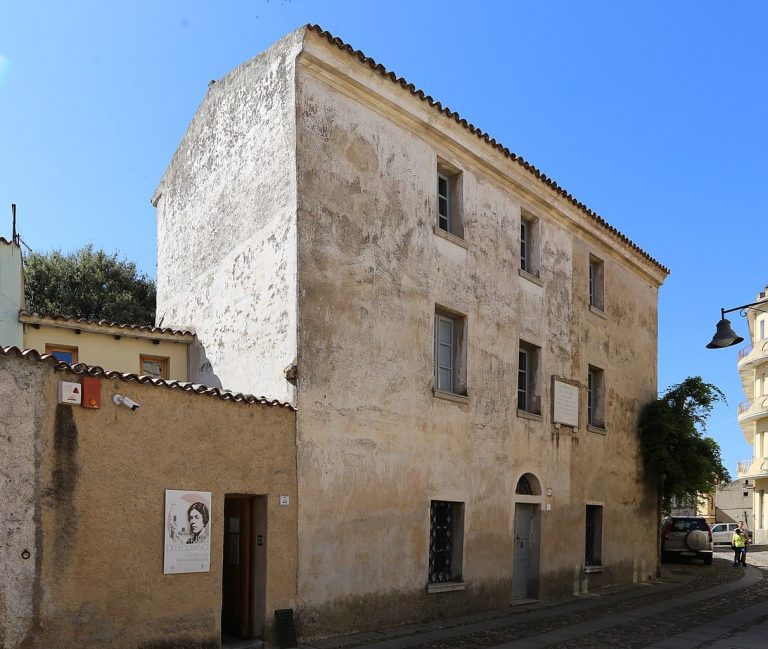
Garibaldi Museum on Caprera
The island of Caprera lies to the north-east of Sardinia and is connected to the larger island of La Maddalena by a navigable causeway.
The house on Caprera, where Giuseppe Garibaldi, one of the protagonists of the Italian unification movement, spent the last years of his life from 1856 to 1882, is now a much-visited museum: the Garibaldi Compendio is a historical park where you can visit Garibaldi’s house, surrounded by the blue sea and the green Mediterranean scrub. Inside you can see utensils, paintings, photographs and the canopy bed where the hero of two worlds (Garibaldi also fought in Brazil) spent his nights and where he breathed his last, overlooking the sea.
Compendium Garibaldino
Isola di Caprera, 07024 La Maddalena
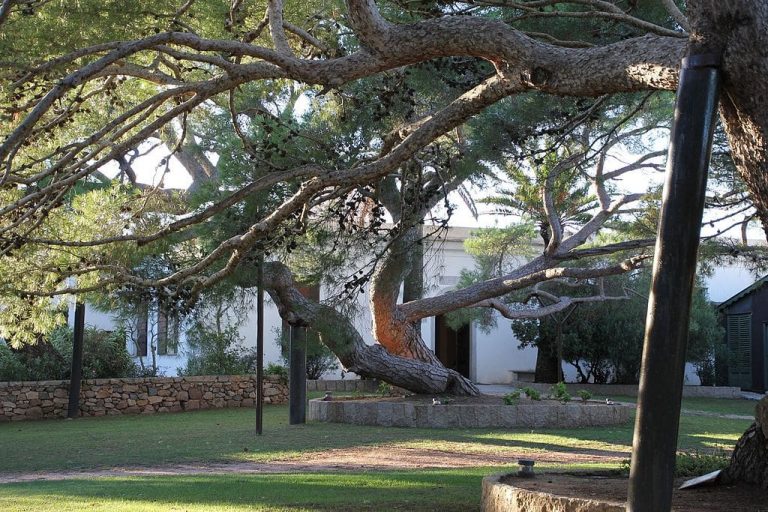
Coal museum at Carbonia
Mining was very important in Sardinia in the past and until 1911 there were about 120 active mines on the island, employing about 13,000 workers. The main minerals extracted were lead, zinc, coal, silver and silicon. The remains of the mines and quarries can still be seen today, particularly in the south-west, in a rugged, wild and romantic landscape. In Carbonia, we recommend a visit to the Coal Museum, which is housed in the Serbariu mine, which was active until 1950. You can visit three areas, including an underground mine tunnel that offers a real immersion experience thanks to the ad hoc installations.
Museo del Carbone
Grande Miniera di Serbariu – 09013 Carbonia SU
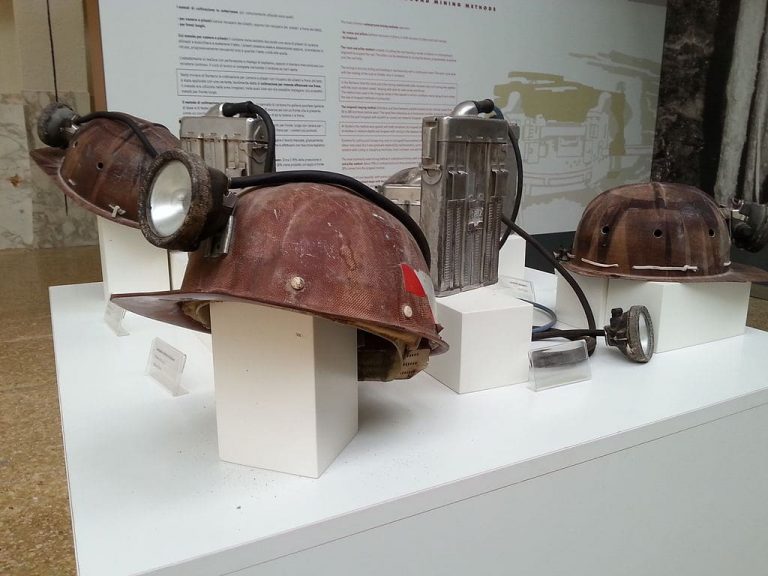
Ecomuseum of the Rosas Mines near Narcao
The numerous mines and quarries that once made the Sulcis-Iglesiente one of the most developed (and richest) regions of Sardinia made the closure of the mines all the more devastating for the population and the economy of the island: not far from Carbonia, hidden in the hills, is the Rosas mine, whose mining activities began in 1851 and ended in 1980. The municipality of Narcao decided to rehabilitate the area and create the Eco-Museum as an industrial monument. In this museum, the history of the mine is told through tools such as miner’s lamps, hammer drills and many other tools from all eras. You can also take a walk around the site. There is also a bar, a restaurant and accommodation.
Rosas Mines
Strada Località Rosas, 09010 Narcao SU

Museum of the Byssus in Sant Antioco
This is not a museum in the traditional sense, but a workshop in the south-west of Sardinia, in the town of Sant’Antioco, where Chiara Vigo tells the impressive story of the history and processing of byssus silk (it. Bisso). Well-known examples of byssus threads are the blue mussel, which attaches itself to structures with the threads; after processing, these threads can either be woven or used as embroidery to decorate other fine fabrics; in ancient times, fabrics woven with byssus were very valuable.Tip: Visits are by appointment only and for groups of up to 12 people.
Bisso Marino Museum
Via Regina Margherita, 168, 09017 Sant’Antioco SU, +39 348 433 6521
Entrance is free, but donations are welcome.
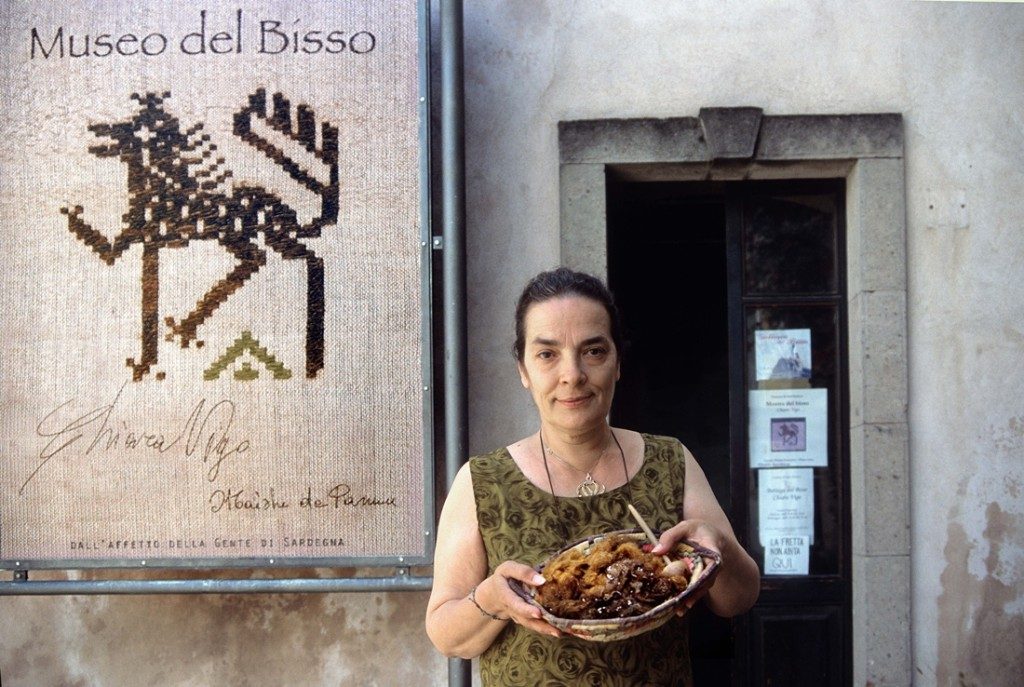
Source:https://issimoissimo.com/italianissimo/under-the-seas-bisso-di-mare/
 it
it de
de nl
nl en
en fr
fr
